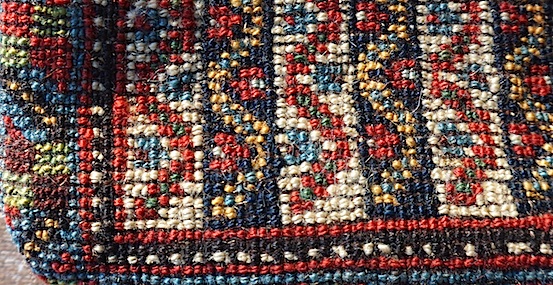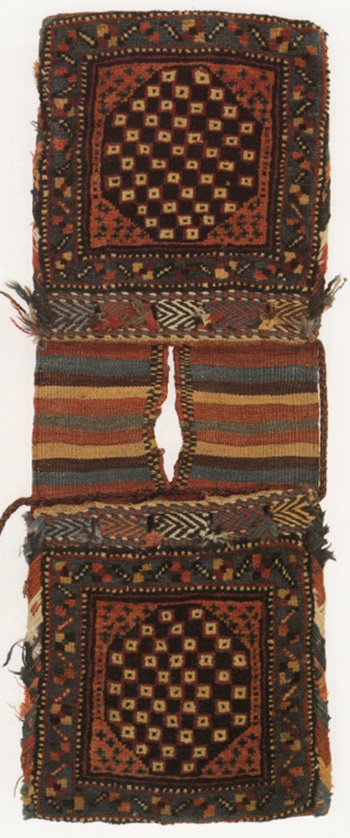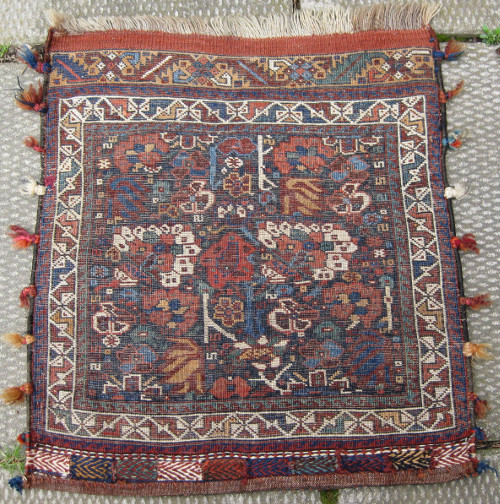| #1 Patrick Weiler |
November 4th, 2014 07:18 PM |
Other Often Appropriated Motifs
There
are several motifs, often border designs, which are strongly identified
with one of the SW Persian tribes or another, but which are
appropriated and shamelessly used by another. Usually they did this
just to confuse us collectors a hundred years later. I do stuff like
that, too. Like put a newspaper from Russia or Japan into a wall when I
am remodeling, just to make things interesting when they tear the house
down. Or build a storage box into the old laundry chute.

Here is one such design, the spikey-flower meander border. This saddle blanket is from Horse and Camel Trappings of Tribal Iran by Tanavoli.
It is labeled Qashqai, with symmetric knots.

This one has the same border, field and inner-boteh border designs, yet this one, 21"hx19"v (53x49cm) has depressed warps more indicative of Afshar work. The 12hx12v knots, at 144 per square inch is quite fine.

Not noticeable from ebay photos is one of the red dyes in the borders has turned to a pinkish orange on the front. This is most noticeable in the two minor borders, with the insides of the meander using the faded red. I am sure the weaver thought the brighter shade of red would stand out from the more maroon red of the border. And, yes it does, only as a lighter shade now!

And here is one with a chunkier construction at 7hx10v, for 70 symmetric knots per square inch with moderately depressed warps and the light orange weft we find in Afshar weavings. The boteh design is dissimilar to the field of circles, although within each boteh are two circles. But the outer and minor borders are the same.

Was this just a more rural version of the finer, high-class finely woven types?

For those who are still paying attention note the lower edge with white warps compared to the darker warps at the top.
note the lower edge with white warps compared to the darker warps at the top.
Yes, once again the Rapacious Restorer was hard at work, denying us the virtue of a truly naturally disintegrating document of the ages.
These "common" design types have confused and complicated weaving identifications for many years. It shows that there needs to be some effort to differentiate on bases less obvious than simple design.
Next up is the Geometric Vase border, swapped and stolen with impunity amongst the tribes.
Patrick Weiler

Here is one such design, the spikey-flower meander border. This saddle blanket is from Horse and Camel Trappings of Tribal Iran by Tanavoli.
It is labeled Qashqai, with symmetric knots.

This one has the same border, field and inner-boteh border designs, yet this one, 21"hx19"v (53x49cm) has depressed warps more indicative of Afshar work. The 12hx12v knots, at 144 per square inch is quite fine.

Not noticeable from ebay photos is one of the red dyes in the borders has turned to a pinkish orange on the front. This is most noticeable in the two minor borders, with the insides of the meander using the faded red. I am sure the weaver thought the brighter shade of red would stand out from the more maroon red of the border. And, yes it does, only as a lighter shade now!

And here is one with a chunkier construction at 7hx10v, for 70 symmetric knots per square inch with moderately depressed warps and the light orange weft we find in Afshar weavings. The boteh design is dissimilar to the field of circles, although within each boteh are two circles. But the outer and minor borders are the same.

Was this just a more rural version of the finer, high-class finely woven types?

For those who are still paying attention
 note the lower edge with white warps compared to the darker warps at the top.
note the lower edge with white warps compared to the darker warps at the top.Yes, once again the Rapacious Restorer was hard at work, denying us the virtue of a truly naturally disintegrating document of the ages.
These "common" design types have confused and complicated weaving identifications for many years. It shows that there needs to be some effort to differentiate on bases less obvious than simple design.
Next up is the Geometric Vase border, swapped and stolen with impunity amongst the tribes.
Patrick Weiler




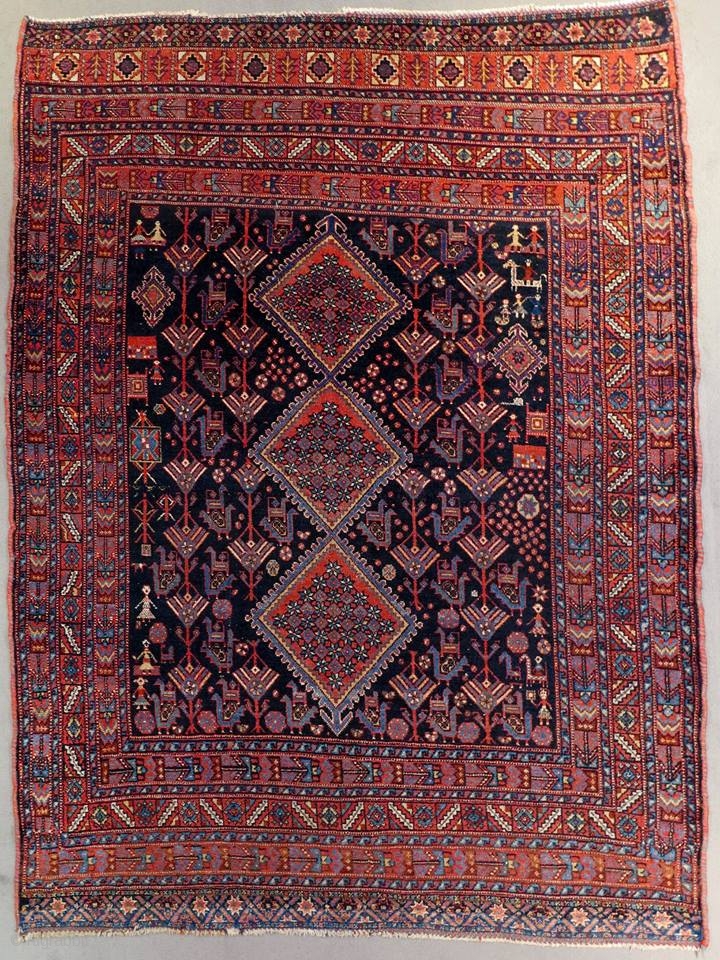


















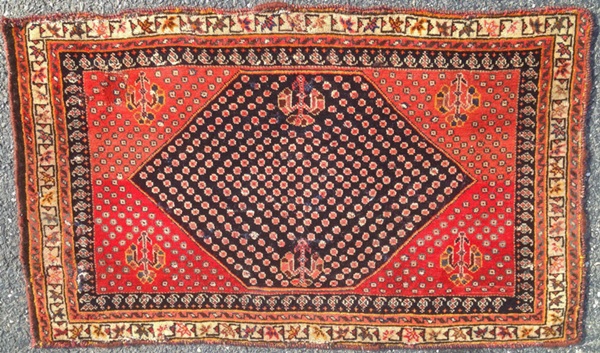









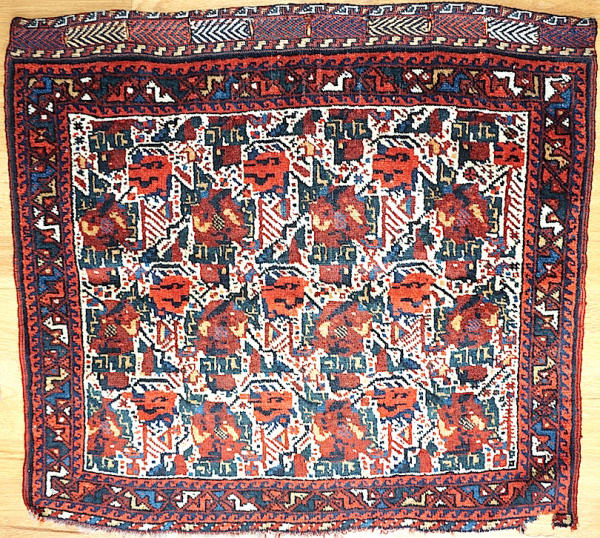







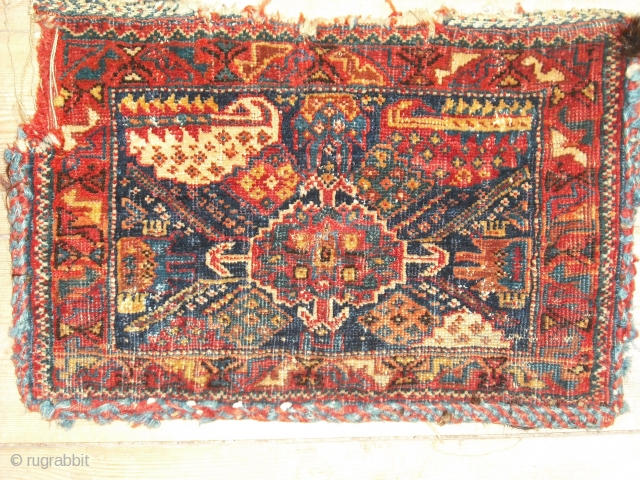













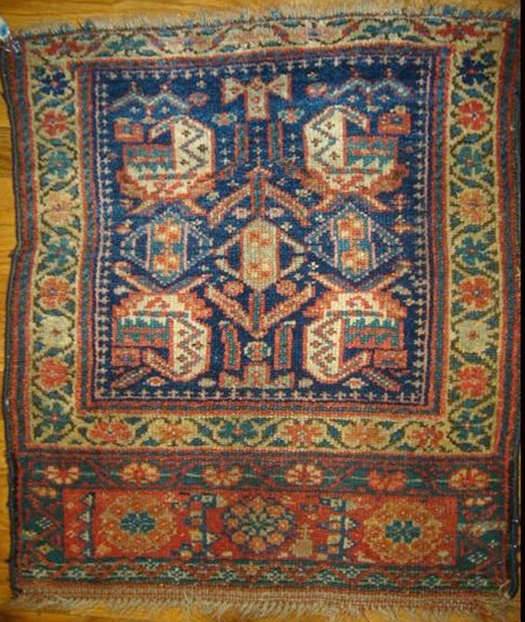









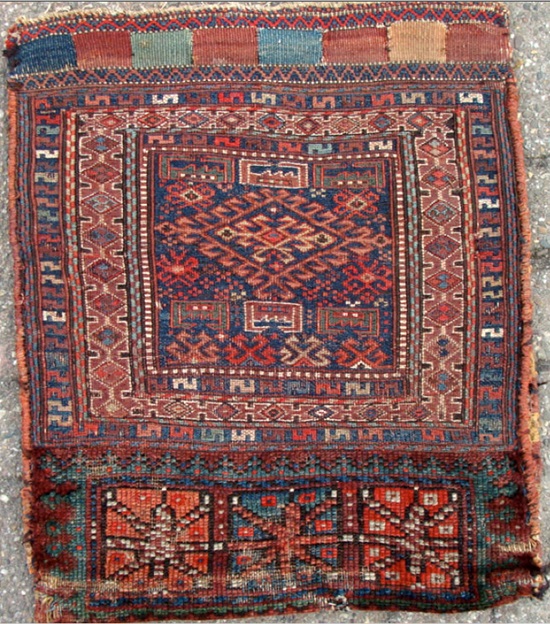




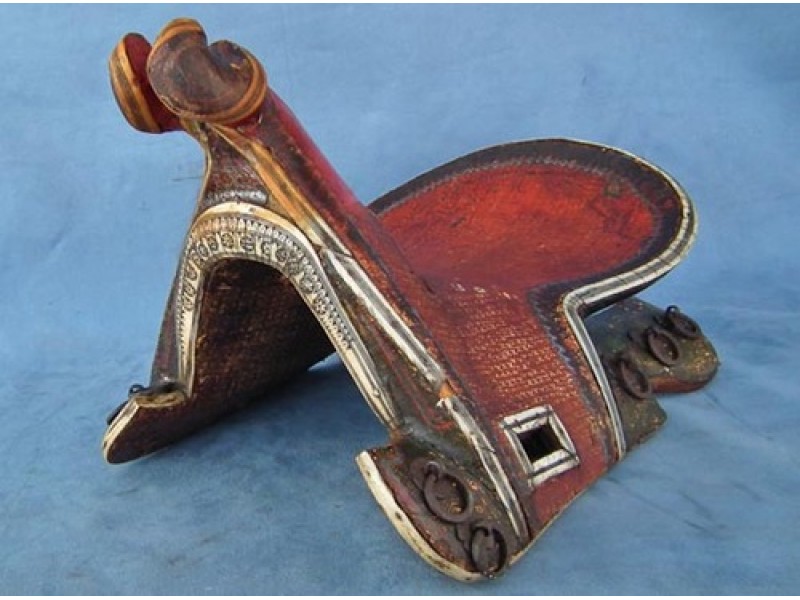
 :
:


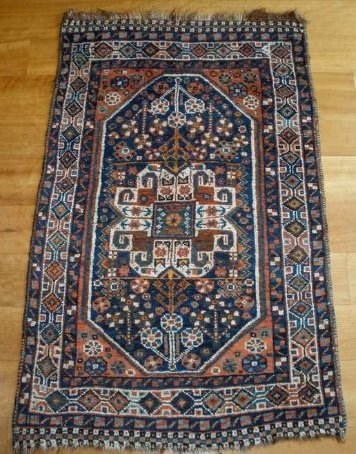

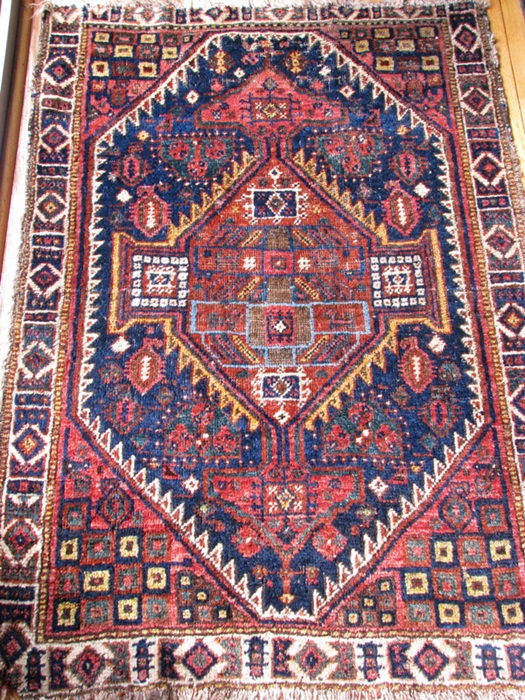







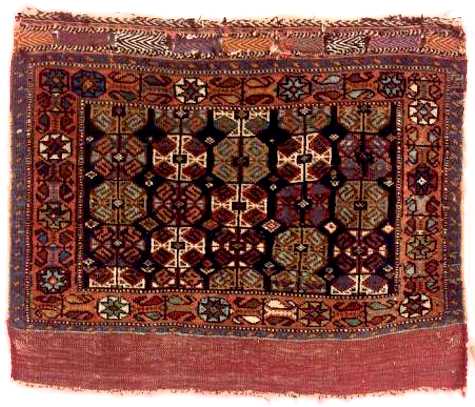


 )
)
